How to make a decorative fireplace with your own hands. How to lay out a fireplace with your own hands Construction of a base for a cast iron firebox
It is not easy to lay out a real brick fireplace, but anyone can install a ready-made firebox in the house and decorate it beautifully if they wish. It is very important to choose the right place, prepare a solid, reliable foundation, and cover the adjacent walls with non-combustible materials. It is also necessary to consider the fastening of the chimney pipe and ensure its fire safety. If you follow the technology, installing a fireplace insert yourself will not cause any trouble.
The weight of the firebox and fireplace body is very large, so the base under it must be as strong and reliable as possible. It is especially important that this base does not have differences in height, otherwise the structure will settle unevenly and cracks will appear. In addition, the walls adjacent to the firebox should be made of non-combustible materials or sheathed with fire-resistant insulation and galvanized sheets.

On preparatory stage required:
- cement-sand mortar;
- brick;
- metal mesh for reinforcement;
- building level;
- trowel;
- insulation;
- waterproofing material;
- roulette.
Video - Fireplace installation step by step
Step 1. Marking for the fireplace
The area where the fireplace will be installed must be free and clean. The width and length of the fireplace are measured with a tape measure, and markings are drawn on the floor with chalk. If bearing wall made of wood, it is recommended to either cut out a section of it and replace it with brickwork, or lay an additional brick partition back to back.

If the second option is chosen, the partition should be installed on the same foundation as the firebox. This must be taken into account when marking the base in the floor and add masonry thickness around the perimeter. Lines are also drawn on the wall to indicate the width of the fireplace.
Step 2. Pouring the foundation
The area of the foundation should be larger than the area of the fireplace, so add 30-40 cm on each side. The depth of the foundation is approximately 50 cm; a thinner base will not withstand the load. If the floor in the house is made of boards, a fragment of the covering along with the joists is cut out according to the markings. Mix the cement mortar, then pour a small amount onto the prepared area. They are leveled, a reinforcing mesh is laid on top and filled with mortar again.

You can make a brick foundation: red brick is laid out in several rows with obligatory bandaging until the base rises to the level of the finished floor. The surface of the foundation is checked with a level, leveling with a solution if necessary. When the solution dries well, the base is covered with waterproofing material.

Step 3. Construction of the partition
The masonry is made of brick, aerated concrete or tongue-and-groove slabs - fire-resistant materials. There must be free space between the masonry and the firebox for warm air to escape. Do not lay bricks or blocks close to the pedestal and walls of the firebox. To connect the fire-resistant masonry to the load-bearing wall, metal rods are used, which are laid between the bricks and driven into the wall.
The finished brickwork is plastered with cement mortar or laid mineral wool, and cover the top with foil material with the foil facing out. You can upholster the masonry with galvanized sheets. If the fireplace is mounted in a corner, the seam between the walls is sealed with a special sealant.
Step 3. Making a pedestal for the firebox
A U-shaped pedestal is laid out on the red brick floor. It consists of 3-4 rows, depending on the desired height of the fireplace. A mixture of clay and sand is used as a binding solution. To reduce the load on the floors, instead of brick you can use aerated concrete blocks, and then plaster them with cement mortar. Each row must be checked with a level; the bricks are adjusted using a rubber hammer. Excess solution is immediately removed with a trowel.


Steel corners are laid on the bricks of the fourth row so that they connect the opposite walls. The corners are placed at a distance of 15-15 cm with the protrusion upward. The bricks are placed on edge and grooves are sawed, then they are laid so that the protrusions of the corners fit tightly into the cuts. Only 2/3 of the top of the pedestal is laid with bricks, leaving the space near the wall free. Strengthen it all with a solution and level it. The surface must be perfectly horizontal.


Installation of firebox and chimney
When the solution has hardened, you can begin the main part - installing the fireplace insert. Accuracy is very important here, because it is unlikely that it will be possible to correct errors without dismantling the structure.
Step 1. Installing the firebox


Using mastic or heat-resistant glue, a finished U-shaped porcelain stoneware slab is installed on the masonry, leaving an open space near the wall. The side sections of the slab are deepened into the walls by several centimeters. After leveling, a firebox is placed on the stove. There must be a distance of 4-5 cm between the back surface of the firebox and the wall. You cannot move the firebox close.

Step 2. Lining the firebox
It is necessary to lay out the walls of the fireplace around the firebox and beautifully decorate the façade itself. The side masonry should not touch the surface of the firebox, but should fit very tightly with the load-bearing wall. Joints should be processed gypsum plaster or sealant. When the height of the masonry exceeds the height of the firebox by 2 rows, a ready-made U-shaped heat-resistant slab is again laid on top. Check its horizontal position and secure it with glue.





Step 3. Installation of the chimney
A 70x50 cm hole is cut out in the ceiling and a metal profile is attached around the perimeter. The cutout in the ceiling must be above the cutout in the slab and fully correspond to it. Between the ceiling and the slab, 4 vertical metal profiles or duralumin corners are installed, securing them with self-tapping screws at the corners of the holes. These 4 posts are the frame of the chimney.

A pipe is inserted into the opening of the firebox and its other end is brought out through a cutout in the ceiling into the attic. To keep the pipe vertical, clamps are used. The chimney frame is lined with heat-insulating mats from the inside, and then the entire surface is covered with foil.

You can use foil-coated insulation. The ceiling of the box is also covered with this material, making a cutout for the pipe. A gap of 2 mm should be left between the insulation and the pipe. From the outside, the frame is covered with plasterboard slabs, wooden panels or asbestos-cement sheets. Under the ceiling, a cutout is made in the casing for the ventilation grill.


Step 4. Leading the pipe from the attic to the roof
The chimney assembly continues in the attic. Hot glue is applied to the pipe cut around the circumference and inserted into the pipe coming from the fireplace. Then they install a box around the pipe, insulate it and cover it with plasterboard. A ventilation grille is inserted near the floor.
A seal is put on the third part of the pipe, a protective cap is attached on top, and the lower section is coated with bitumen mastic. Having connected the parts of the pipe, coat the surface of the roofing with mastic and press the sealant onto it. They are screwed along the edges with self-tapping screws and the joints are sealed.
Finishing and checking the operation of the firebox
Once the chimney is installed, you can begin finishing the fireplace base. The surface at the foot of the firebox is tiled or decorative stone. It is forbidden to lay a wooden floor or laminate flooring at a distance of 50 cm from the fireplace, since the covering may catch fire from falling coals or sparks from the firebox.
It is also recommended to place an openwork metal grate in front of the fireplace for safety. The decor is completed with fireplace tongs, a poker, a beautiful firewood stand and other accessories. Forged elements painted black look the most elegant.


After completing the finishing, you need to check how the fireplace works. It is advisable to open the windows for the first time, as the paint on the firebox will burn and emit an unpleasant odor. If smoke penetrates into the room during fuel combustion, this means that the installation technology was violated. To eliminate the causes, you should check the air supply to the firebox and the tightness of the chimney seams.

It is very important not to build a strong fire when checking; it is better to start with a small temperature load.
Video - DIY fireplace insert installation
A closed fireplace insert is safer to use than an open one. Therefore, installing a fireplace with a cast iron firebox is the best solution if there are children in the house. We will talk about the pros and cons of such fireplaces, as well as how to install fireplaces with your own hands, in this article.
A closed firebox is a chamber made of cast iron for burning wood, in which one of the walls is replaced by a glazed door. A very convenient door is equipped with a lifting mechanism that moves it upward, under the lining, and allows you to instantly turn a closed firebox into an open one. An ash pan is located under the combustion chamber, through which air enters it. And the smoke is discharged through a pipe installed in the upper part of the firebox. In principle, installing a fireplace insert involves constructing a base for it with your own hands and a decorative cladding that allows you to hide metal parts from view, leaving only the firebox visible and giving the fireplace a familiar appearance.
It cannot be stated unequivocally that a closed firebox is better than an open one, or vice versa. The choice depends on many factors and conditions, and it is worth getting acquainted with them before you begin installation yourself.
Advantages
- A closed firebox has higher efficiency, especially if it is equipped with heat storage devices.
- A huge selection of models differing in size, appearance, glass shape, etc.
- Manufacturer's guarantee for high-quality operation of the firebox and smoke exhaust.
- Closed cast iron fireboxes last longer than open ones made of fireclay brick, and burnt parts can be replaced.
- The absence of open flames provides better fire safety.
- Lower overall cost of the fireplace compared to similar models with an open firebox made of fireclay bricks.
- Fast and simpler installation, which can be done with your own hands and without “wet” work.
Flaws
- A short review of fire, especially for economical models.
- You have to watch the fire through glass, which needs to be cleaned regularly (see).
- High-quality cast iron fireboxes, especially those combined with a portal into one structure, are quite expensive.
- The color of the standard firebox is black. If you want to complement it with a brass, gold-plated or silver frame, you will have to pay extra.
How to build your own fireplace with a cast iron insert?
One of the undeniable advantages of such fireplaces, which was not mentioned above, is the ability to install the base for them directly on the floor of the room. The only exception is floating floors. In addition, you don’t have to think about how to equip a fireplace with good draft or arrange an ash pit. All this is already provided for by the design. In a word, making a fireplace with a cast-iron firebox with your own hands is easier than laying out the simplest open fireplace made of brick.
Construction of the base for a cast iron firebox
- You need to choose the right place to install the fireplace. Firstly, the room must have sufficient area. Experts do not recommend installing this heating equipment in rooms whose area is less than 20 square meters. In addition, when choosing a location, do not place the fireplace in line with the openings of windows and doors.
- If the room is ventilated through a ventilation system or using an air conditioner, it is necessary to provide additional air flow into the room. For example, install a ventilation pipe with an automatic ventilation system. A fireplace with a closed firebox requires an average of 500 cubic meters of air

- Having chosen a place to install the fireplace, make a base for it. To do the work yourself, you need to lay a layer of waterproofing and place a reinforced cement screed on top. If the floors are wooden, then a layer of thermal insulation is also required. The thickness of the screed is at least 10–15 mm; metal mesh can be used as reinforcement.
- After the base reaches the required strength, you can start constructing a pedestal for the cast iron firebox with your own hands. It can be made from brick, aerated concrete blocks or other material, or you can purchase and install a ready-made plinth made of natural stone.
- If the floors are not strong, then It is better to give preference to aerated concrete as a fairly durable and lightweight material that can be effortlessly given any desired shape and size. Subsequently, it can be plastered or faced ceramic tiles, natural or artificial stone.
- The blocks are laid using special glue or ordinary cement-sand mortar. The surface of the pedestal is leveled with a layer of plaster 1–1.5 cm thick.
Please note: the pedestal for installing the fireplace must be perfectly level. Installing the fireplace on an uneven surface is prohibited, since significant misalignment increases the risk of damage to the internal elements of the fireplace. In addition, the heating unit will operate unevenly.
Installation of a cast iron firebox
Regardless of what the base for the firebox is made of, a layer of thermal insulation is laid on it, for example, asbestos cardboard and a sheet of roofing iron.

Attention! When choosing a place for a cast-iron firebox, it is necessary to calculate so that a gap can be left between the walls of the firebox and the fireplace lining for the convection heating system. And the length of the chimney included in the kit should be enough to lead it outside.
To properly install the firebox with your own hands, place blocks in the place where it is installed, level the firebox in place, and then carefully remove the supports. The firebox chimney, made in the form of a metal sleeve or pipe, is installed in the hole intended for it and brought out through the ceilings and roof in compliance with all the rules fire safety.
Important! There are maximum standards for the deviation of the chimney pipe from the vertical, which must be taken into account when doing the work yourself. If its height is less than 5 m, then the angle of deviation should be no more than 45 degrees, and if over 5 m, then no more than 20 degrees.
External fireplace trim
If Bottom part the fireplace is already ready and only needs decorative finishing, then you just have to close it on the sides and top (see).

When answering the question of how to build a fireplace with a cast iron firebox with your own hands, you need to know what the installation will be made of. If it is made entirely of brick, then it is necessary to continue the laying, stepping back from the walls of the firebox at some distance and leaving several holes in it for the release of hot air.

But you can do it simpler and cheaper, at the same time significantly simplifying the structure, - arrange a frame under the cladding.
- The frame is easy to assemble with your own hands from thin-walled metal profiles or duralumin corners connected to each other with metal screws. Its design should provide for fastening the sheathing on the outside and thermal insulation on the inside.
- Thermal insulation mats made of non-combustible material are attached to the frame so that the foil side faces the firebox and chimney.
- You can cover the frame with your own hands using any materials: plasterboard, wood, asbestos-cement boards, etc.
- Openings are made in the thermal insulation and cladding to allow heated air to escape into the room.
A very convenient material for creating a fireplace portal for a small insert or electrical imitation is autoclaved aerated concrete. It is easy to cut with a regular hacksaw, has smooth edges and at the same time weighs much lighter than ceramic or sand-lime brick. A portal made of aerated concrete can be built on any ceiling without the risk of overloading the latter.
1. Another advantage of aerated concrete is that it allows you to realize any design ideas regarding the architecture of the fireplace. You can come up with your own design, make a sketch and make your own set of stones for the fireplace portal.

2. The low weight of aerated concrete (the material floats in water) allows you to build a portal without removing flooring. You just need to make a backing from OSB, fiberboard or plywood.

3. To prevent the metal fireplace from resting on the protrusions of the screen, it is convenient to place a piece or several pieces of drywall of the appropriate size under it.

4. The fireplace should also be isolated from the wall, for which a “back” is cut out of plasterboard, as well as a “covering”, which will create a flat surface for the superstructure.


6. When all the elements are manufactured and precisely fitted, they must be marked in accordance with the assembly diagram.

7. The fireplace portal made of aerated concrete is laid on a thin seam. To apply the glue, use a spatula with a comb.

8. During masonry, the position of the elements should be controlled by the building level.

9. The fireplace portal with a built-in liner is ready. This tutorial does not show how to connect it to a chimney or electricity (imitation liner). All this is described in the instructions for specific equipment. .
Now you can line the fireplace portal with natural stone, clinker tiles, or apply decorative thin-layer plaster.
How to turn an ordinary house into a cozy, comfortable, simply pleasing to the eye, with an atmosphere of warmth, lightness, into a house where all its residents want to return. What can become the center of the home and a place for family and friends to communicate? A fireplace is one of the solutions, and if you build a fireplace with your own hands, the value increases a hundredfold.
And therefore, this matter must be approached with great responsibility, every stage of the work must be calculated, numerous requirements and small nuances taken into account, fire safety must not be forgotten, and, of course, great love must be applied to everything. Only then will the fireplace bring benefits and true pleasure.
Which fireplace to choose?
Each era is characterized by its own design of fireplaces; they never go out of fashion, but the outlines, shapes, lines, and materials from which they are made change. If earlier they chose wood and marble for exterior decoration, today there is a huge choice finishing materials. Relevant themes are classics, minimalism, empire style, royal tiles, hi-tech, urban, country, original and amazing. Which to choose? Solid fuel, electric, or maybe gas? Built-in or wall-mounted, or maybe corner? Open or closed type?
So, where to start to lay out a fireplace? We need to determine what kind of fireplace we need and what it should look like. Here are the demands we put forward:
- The fireplace must be functional, i.e. workers.
- With good heat transfer (efficiency).
- With a closed firebox under glass (safety).
- Corner fireplace (space saving).
- On solid fuel.
We are making a list of what we need in further work:
- cast iron firebox 590/515 cm;
- fireplace facing tiles;
- decorative facing tiles;
- fire brick;
- tile cutter;
- set of spatulas;
- rubber spatulas;
- comb for “combing” the solution;
- aerated concrete blocks 250/600 mm;
- heat-resistant glue “reinforced”;
- pipe according to the diameter of the furnace outlet;
- sheet iron 1.5-2 mm (various scraps);
- grout for facing tiles heat-resistant Ceresit;
- hacksaw;
- angle grinder (impeller);
- welding machine;
- level 2m.


Today the market is represented by a large number of manufacturers offering ready-made products.

A firebox made in France, Rubis, measuring 590/515 cm, is quite suitable.
Preparing a place for a fireplace
Clean and level the surface. We prepare a base from refractory bricks with a size equal to the diagonal of the corner and a width equal to the width of the cast-iron firebox, and leave it until completely dry.

The next stage of work is installing the firebox on the base and installing the chimney pipe
For greater heat output, pieces of sheet iron are welded onto the chimney pipe connecting the firebox to the chimney in the wall. We pay special attention to the tightness of the connections.
We lay out the entire fireplace wall up to the ceiling from aerated concrete blocks. Why we chose aerated concrete blocks, because this material has a porous structure with high thermal insulation properties and fairly good strength.

The process of laying a fireplace is not quick, and you have to lay it out one level at a time so that everything dries well. Be sure to ensure the evenness of the surface, and do not forget to leave pre-designated niches for air circulation behind the fireplace wall. Approaching the ceiling, we gradually tilt it forward at a slight degree, and, not reaching 5 cm from the ceiling, we finish the work.

Thus, we leave a gap between the ceiling and the fireplace wall for air circulation.

We clad the fireplace with stone-like tiles.
Having reached the top of the wall, we glue another row of tiles onto the ceiling itself, giving the fireplace wall a slightly curved appearance. It gives the impression of a single wall extending into the ceiling. We also line niches. Three of them will be designed as shelves and another one will be a niche for storing firewood. A chimney pipe will be visible in one of the niches.
Then we will place some object in front of it (a vase, a figurine or any other decorative item).
Grouting joints
This is a jewelry work that requires great care, since the grout is facing stone difficult to remove due to its roughness. Before work, clean all seams from glue, dilute the mixture in small portions, since the mixture sets quickly, apply rubber spatula. After drying, be sure to wash the tiles until they are completely clean.

Having laid out the fireplace, we lay out a step in front of it, 15 cm high and 30 cm wide, also made of aerated concrete blocks. We cover it with ordinary decorative tiles.
For what? Burning wood that accidentally falls out of the firebox will not fall on the floor surface; this will give it a finished shape once and twice.
A fireplace we built with our own hands.
Winter is coming, time to create real warmth in your home. If you have a house outside the city, I suggest you think about building a fireplace there. I agree that professionals will ask for a lot of money for such work. Therefore, we will try to fold it ourselves, spending only on consumables. Their cost will be from 10 to 20 thousand rubles. And as a result, a new fireplace will burn brightly in your home.
I suggest you immediately realize that you cannot use your fireplace as a heating system. For beauty, for relaxation and partial heating - please. Why? Because only a fifth of the total heat from the fireplace will enter your home, while the rest will naturally fly out the chimney. I already talked about home insulation here:

So, first you need to prepare building materials. You will need:

Glass magnesium sheet
What else should you have on hand? Of course, the tools:
That's probably almost everything, you can get started.
Define place for a fireplace. Measure the room where you plan to put it and draw a rough diagram. The size of the fireplace firebox should be at least 1/50 of the volume of the room, and the ratio of depth to height can be either 1 to 2 or 2 to 3. Otherwise, instead of pleasure, you will spend your evenings in smoke or the fireplace will serve solely as a non-working decoration for your home .

It is best to place the fireplace opposite front door so that maximum heat enters the room. The side walls of such a stove do not heat up, so I advise you to make the fireplace wider and shallower. Plus, it will be much easier to clean.

Now let's prepare the room. To do this, you need to either cover with film or remove from the room where you are going to build a fireplace all items that can get dirty.
At the first stage construction, it is necessary to make a foundation. It is impossible to build a fireplace on the same foundation on which the house stands. The width of the foundation for the fireplace should be at least 5 cm wider than the base row. A hole is dug under the base of the fireplace, at least 50 cm deep and wider than the foundation - at least 10 cm.

Pour crushed stone into the hole, compact it and level the surface. Then prepare the formwork. The inside of the boards must be treated with resin and finished with roofing felt. You install the formwork on crushed stone and fill it with concrete mortar.
The concrete level must be absolutely level and allowed to dry completely. You cannot build a level fireplace on an uneven foundation, so check your actions with a level. Afterwards, you need to put a layer of plastic film on the foundation.
When the foundation is ready, put metal corners on it. The bricks of the fireplace row will have to lie parallel to the interior partition. You can also place metal corners under the base of the fireplace if you are afraid of the spring rising of the soil.
The corners that you have laid out at the base of the fireplace should not move. You can even weld them to each other. Then you need to lay bricks in them and leave a distance between them: you will fill it cement screed. All cracks between the bricks must be closed, so make sure that your solution does not contain lumps and is similar in consistency to thick sour cream.
Let's get started laying the first row of the fireplace. It should have a clear rectangular shape, since the rest of the rows will repeat the same shape. It is better to leave a distance of 5 mm between the bricks. It is better to clean the bricks before laying. You can also put them in water to let the air out. Thus, the bricks will not take moisture from the masonry and will lie stronger. When laying, try not to stain the face of the brick with mortar. Leave a gap of air between the fireplace firebox and the outer walls: it will prevent overheating of the fireplace walls.
During second row masonry you need to leave some space under the door. Make all joints between bricks in the middle, do not leave them on the edge. When installing a fireplace door, remove the glass from it so as not to accidentally break it. Secure the door with oven tape.

The firebox and brickwork should not touch. We place the fireclay brick on the end, closer to the top of the fireplace - it will be level with the ceramic row. We lay the glass-magnesium sheet on top of the masonry. It can withstand fairly high temperatures (up to 1000 degrees). It is better to fill the fireplace pockets with small fragments of brick (breakage) so that they help retain heat. After installing the door, we place a metal corner on the front. Using it as a guide, we make a screed over the door. The upper stove belts can be hidden there too.

We wipe the firebox and smoke collector from any solution that may have gotten there during the laying process. The fireplace cannot be plastered from the inside. The fireplace chimney is laid out slightly with an overlap - up to 5 cm from row to row. The chimney pipe must be positioned vertically. A smoke chamber should be made above the firebox, and a small cornice should be provided under it. It will prevent sparks from flying into the room.

When you finish all the construction work, you can think about appearance fireplace. For example, decorate it with tiles, tiles, or imitation natural stone. Finishing should begin from the bottom, using tile adhesive.
In conclusion, I will say that doing this kind of work yourself is quite difficult. Therefore, if you are determined to build a fireplace at home, think twice. Maybe it's worth buying ready-made option, or choose an eco-fireplace. Although, to become a real master, you don’t have to be afraid of difficulties.

In any case, good luck to you in all your endeavors!
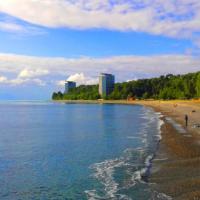 Are there mites in Pitsunda? Ticks in Abkhazia. Pitsunda pine grove
Are there mites in Pitsunda? Ticks in Abkhazia. Pitsunda pine grove Red viburnum (Viburnum opulus L
Red viburnum (Viburnum opulus L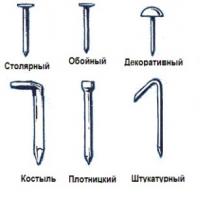 Nail Making Business How to Make Copper Nails
Nail Making Business How to Make Copper Nails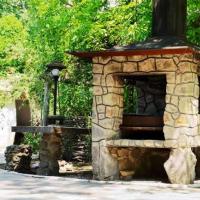 Stone brazier: material features and manufacturing options
Stone brazier: material features and manufacturing options Blackroot medicinal cultivation
Blackroot medicinal cultivation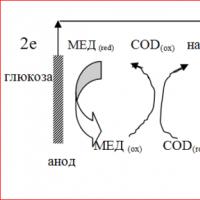 Fuel cells: a glimpse into the future
Fuel cells: a glimpse into the future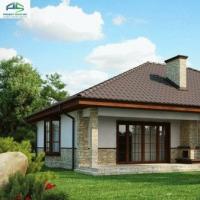 Houses with a hipped roof projects
Houses with a hipped roof projects